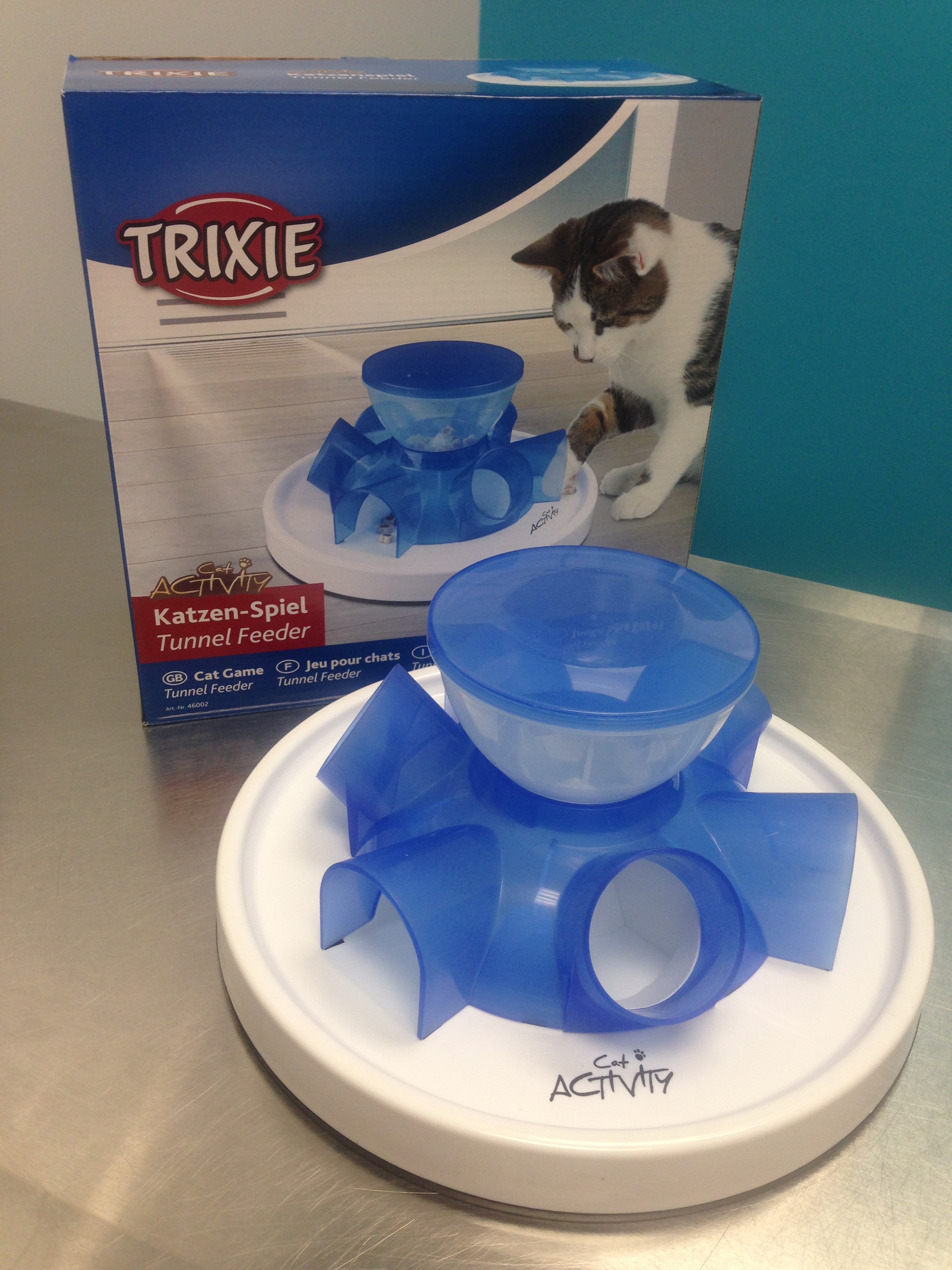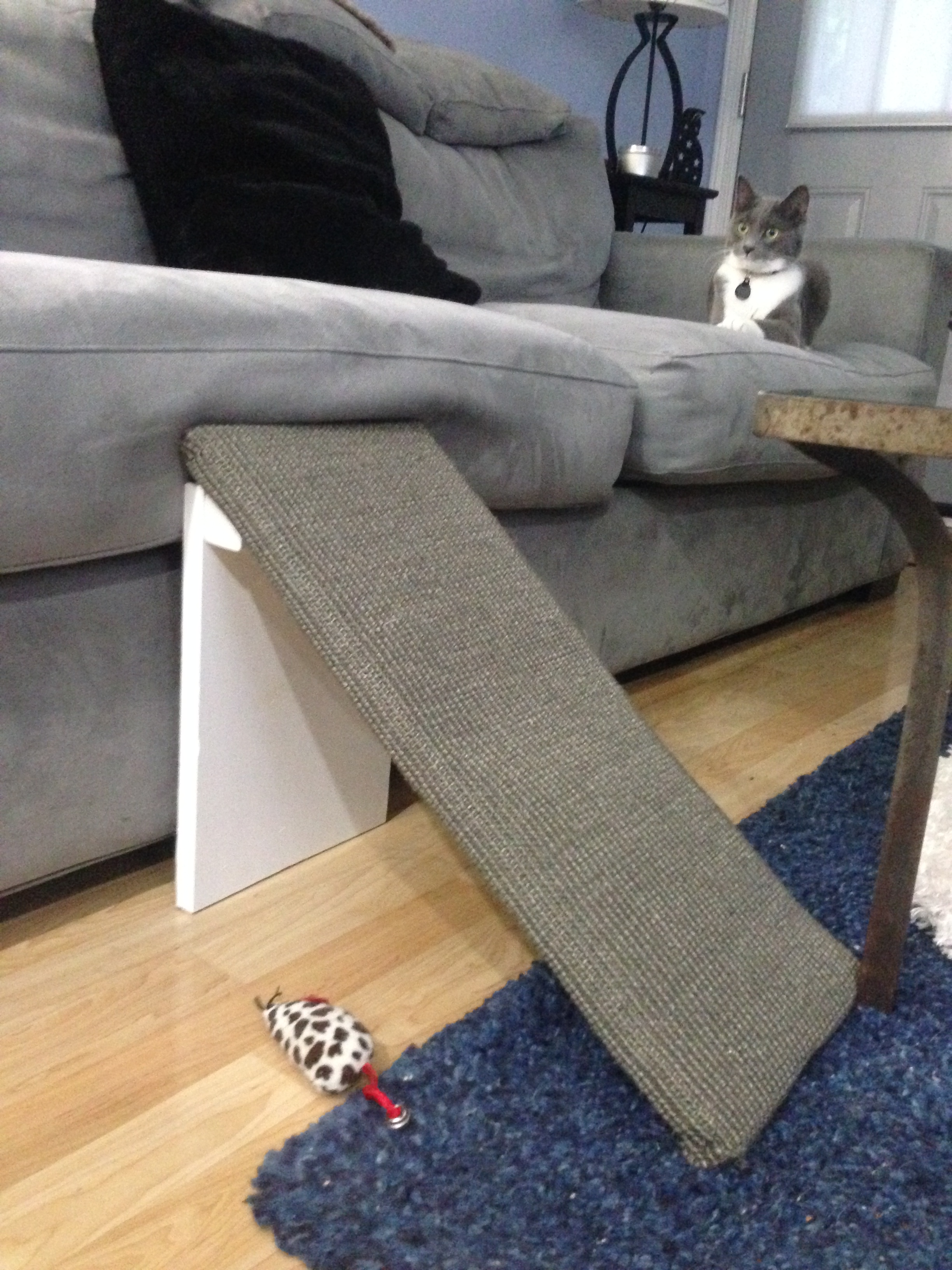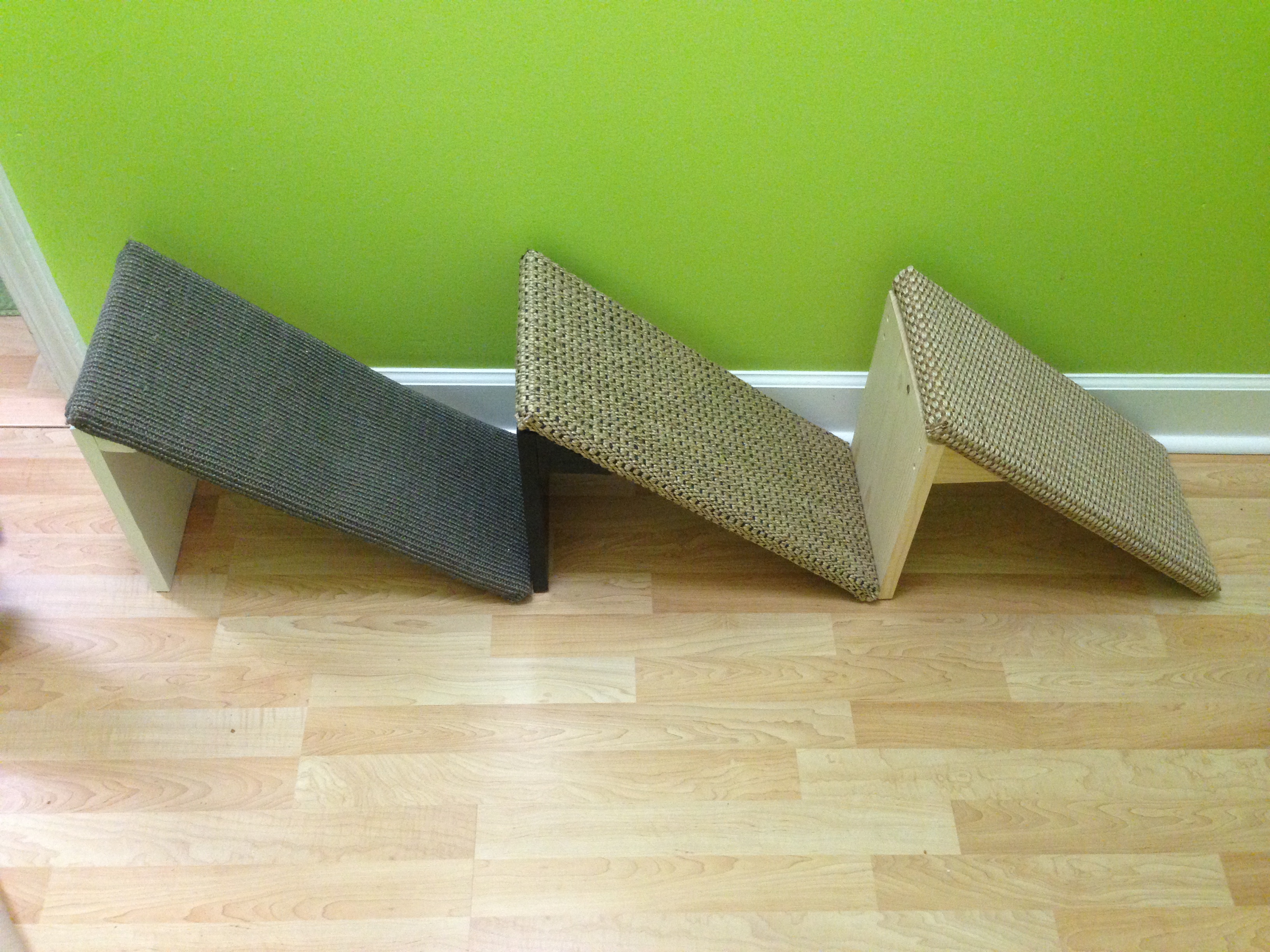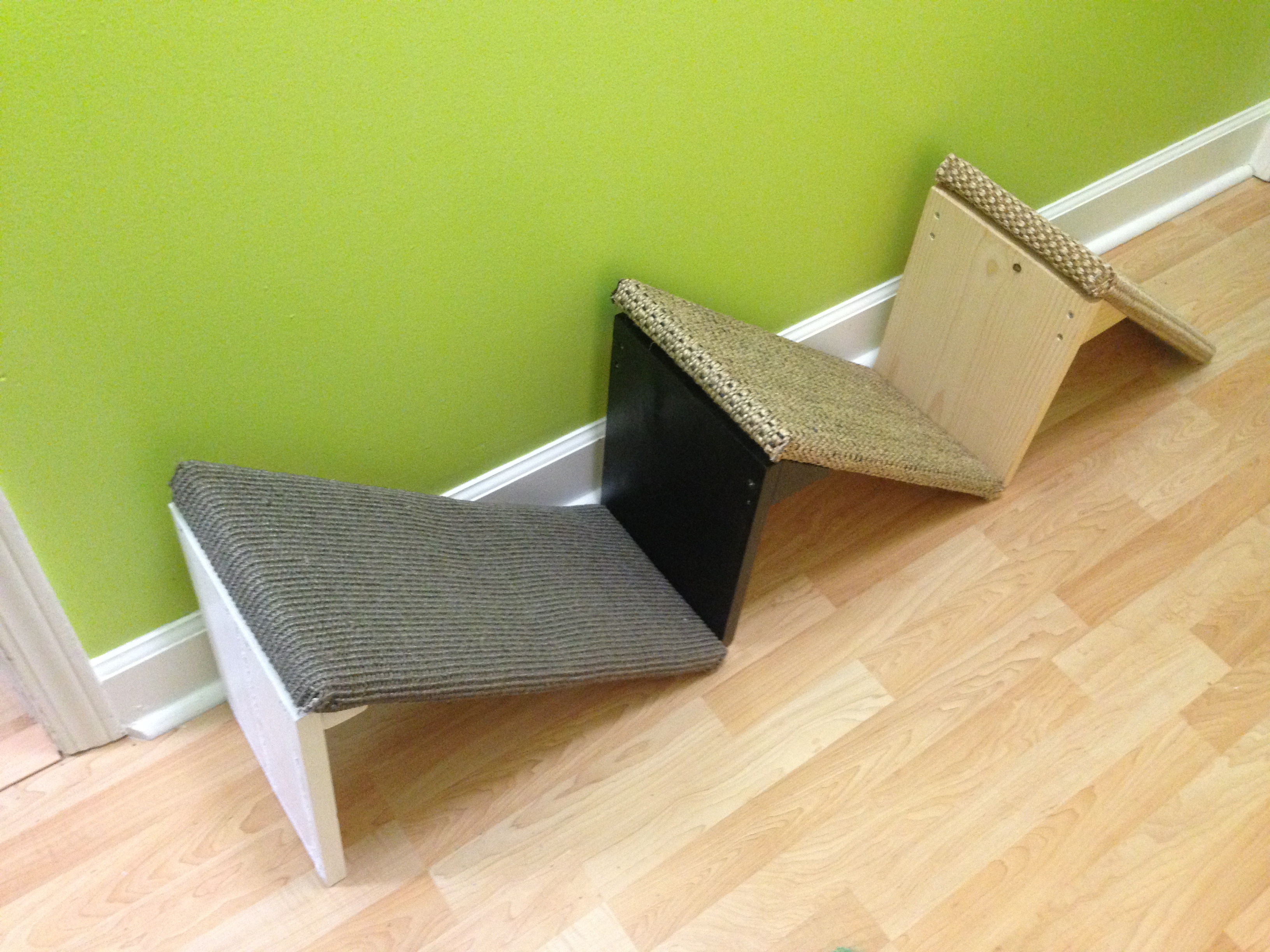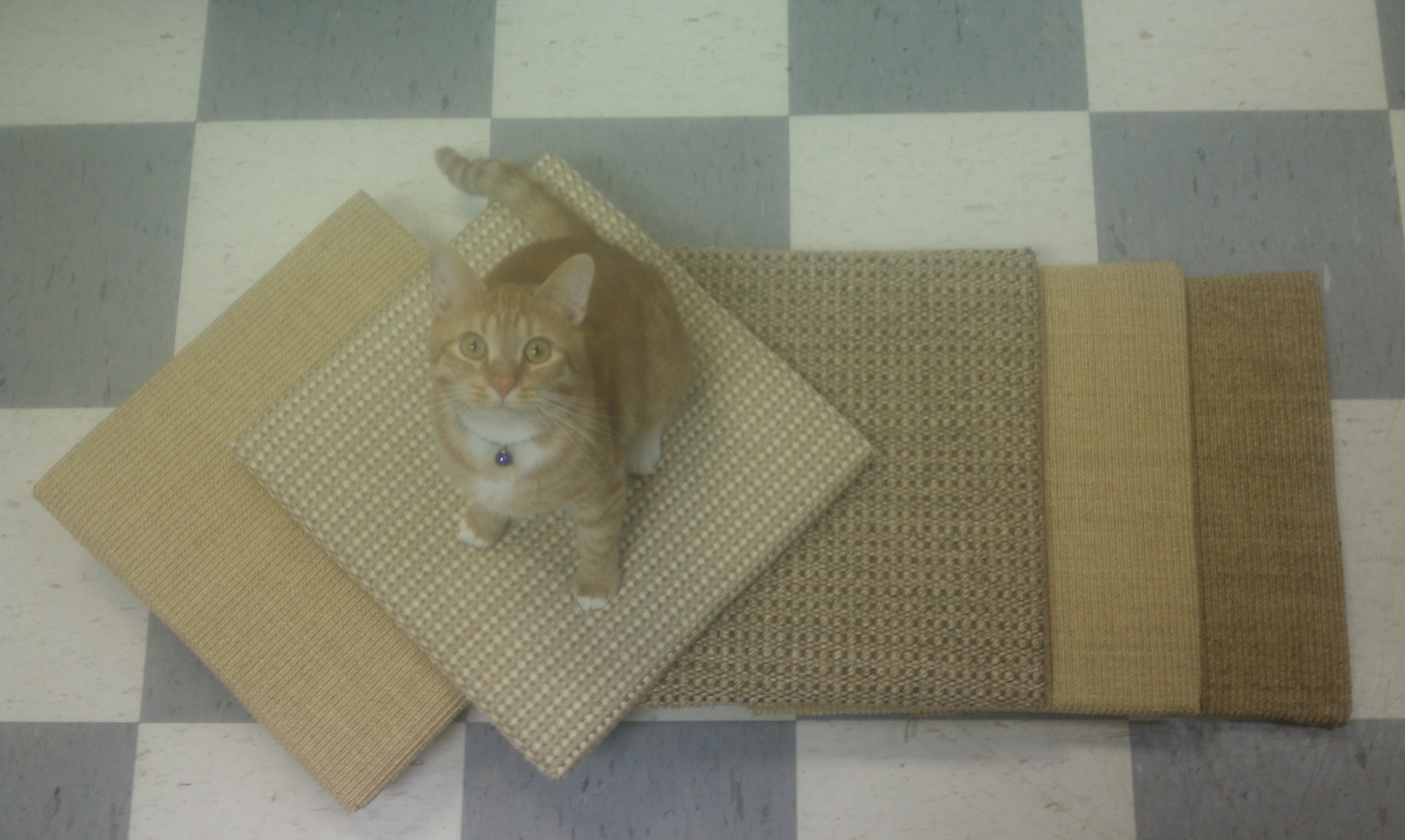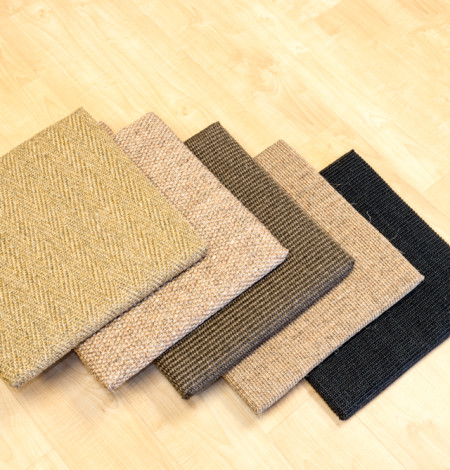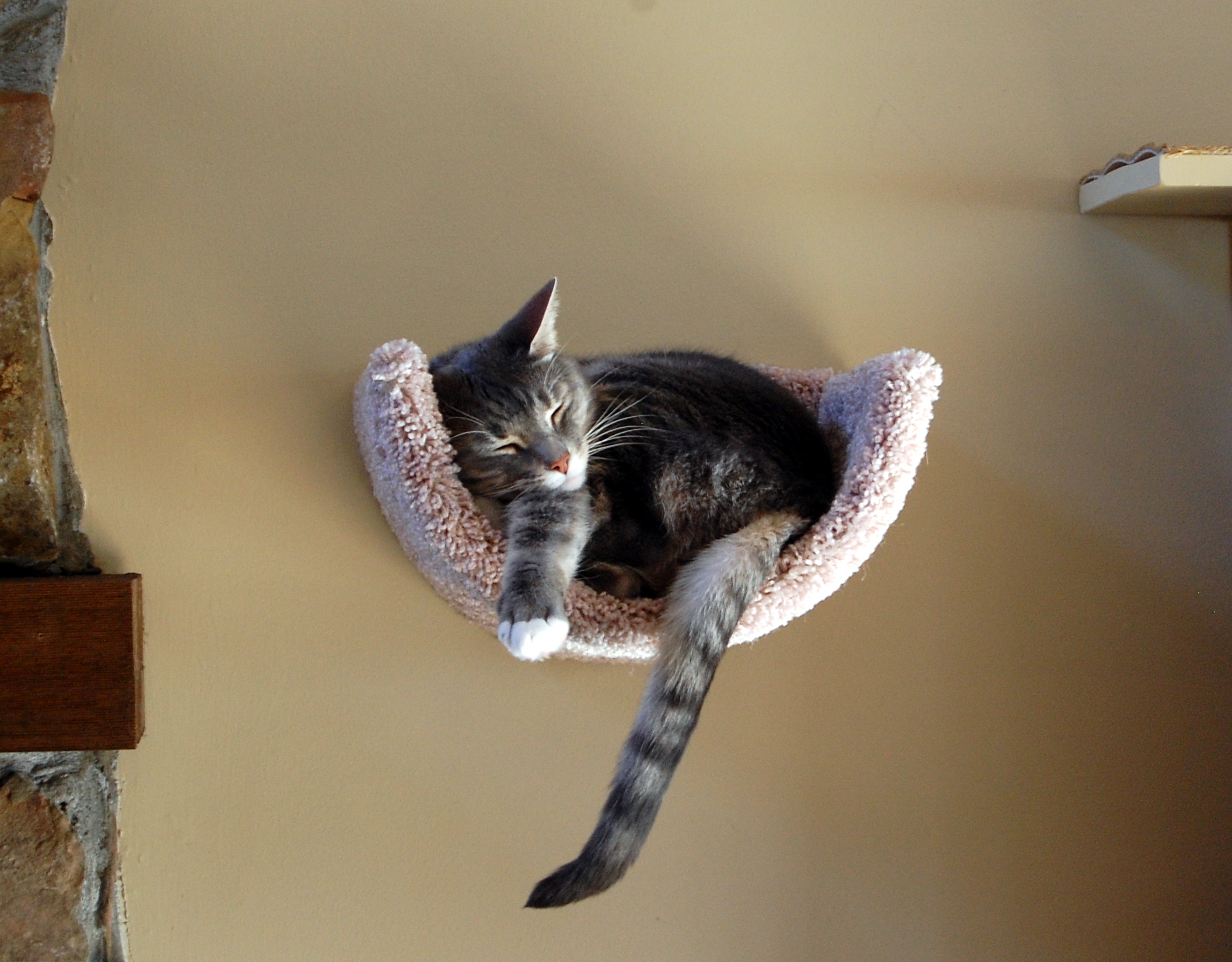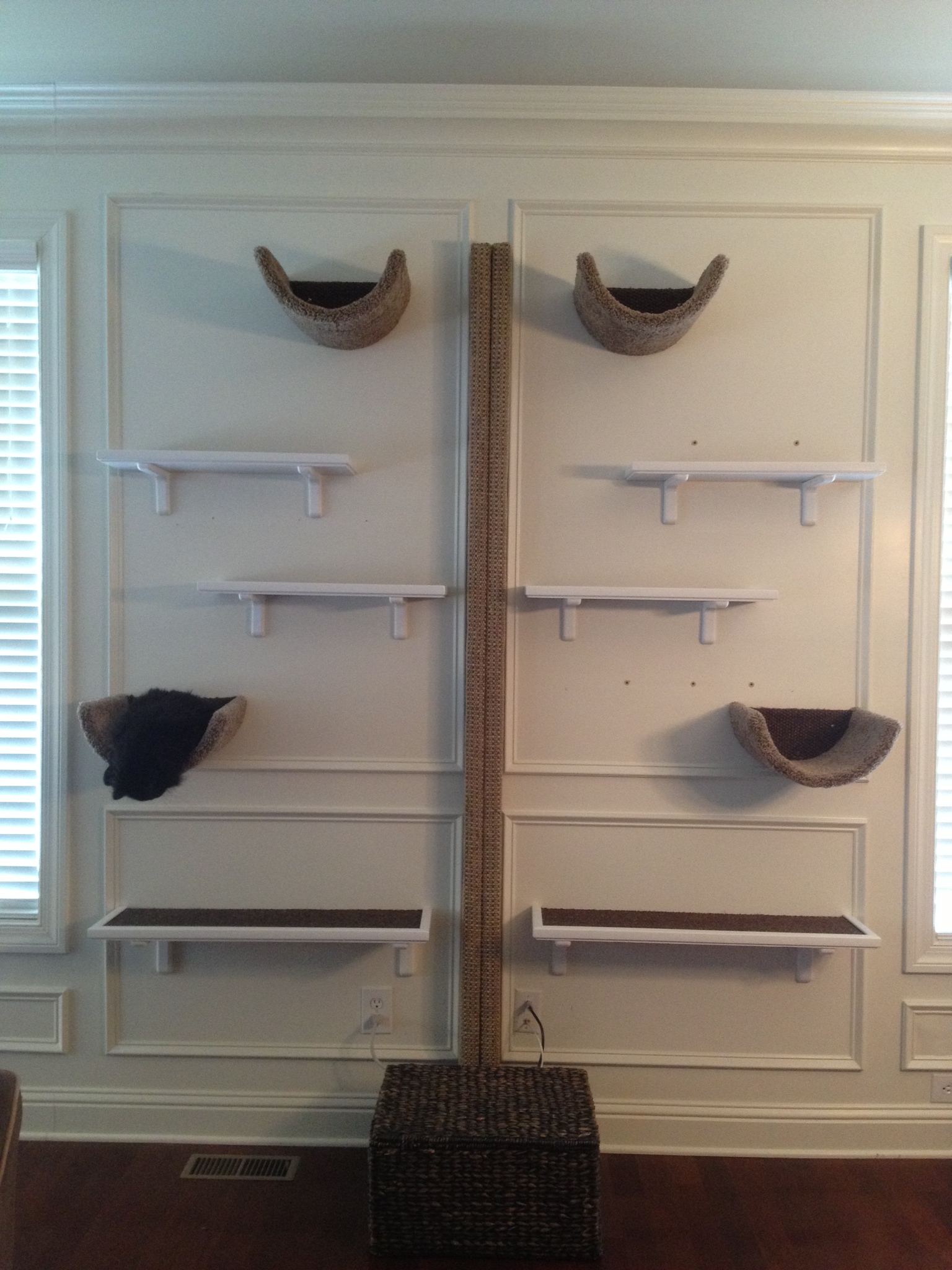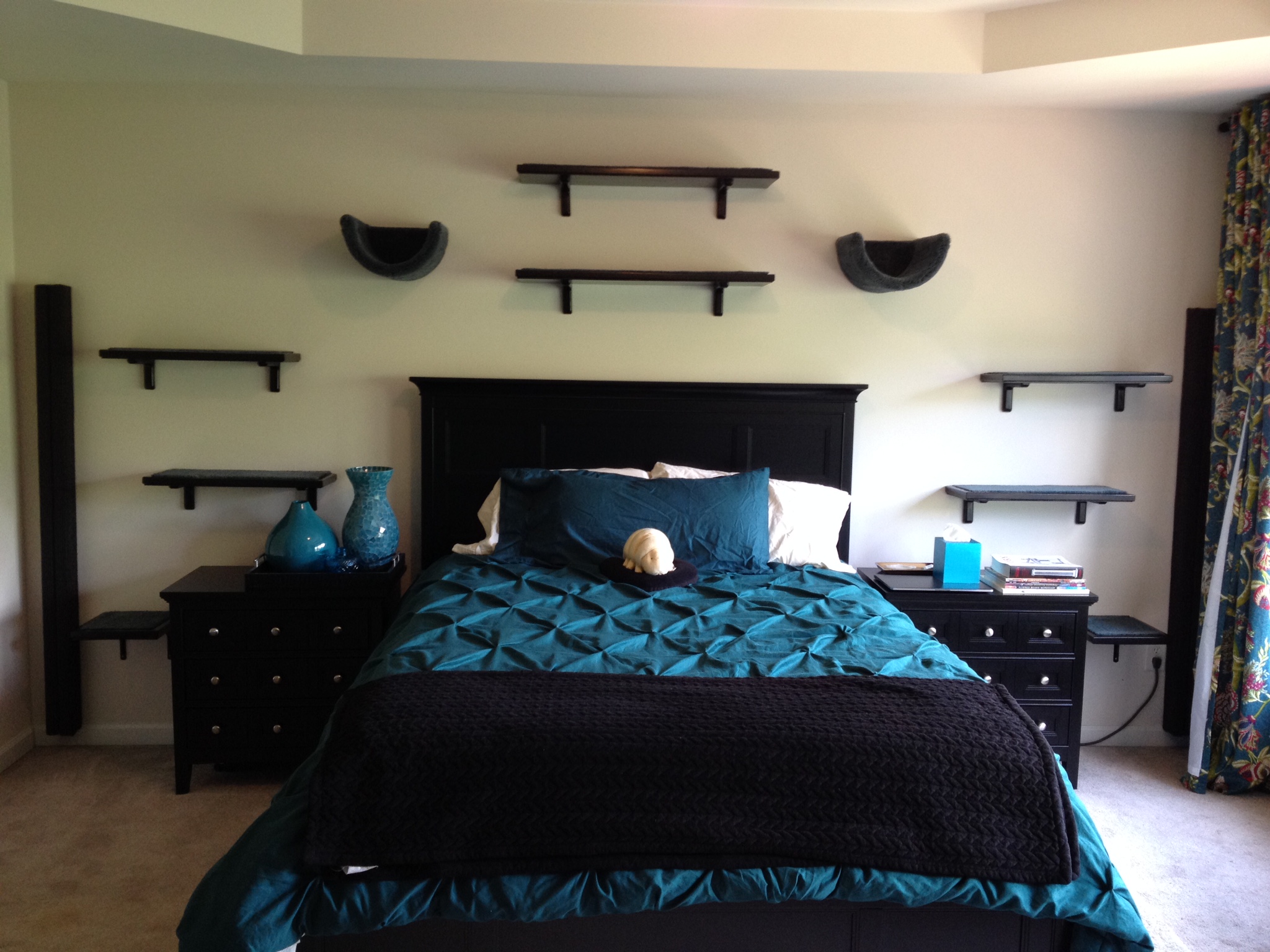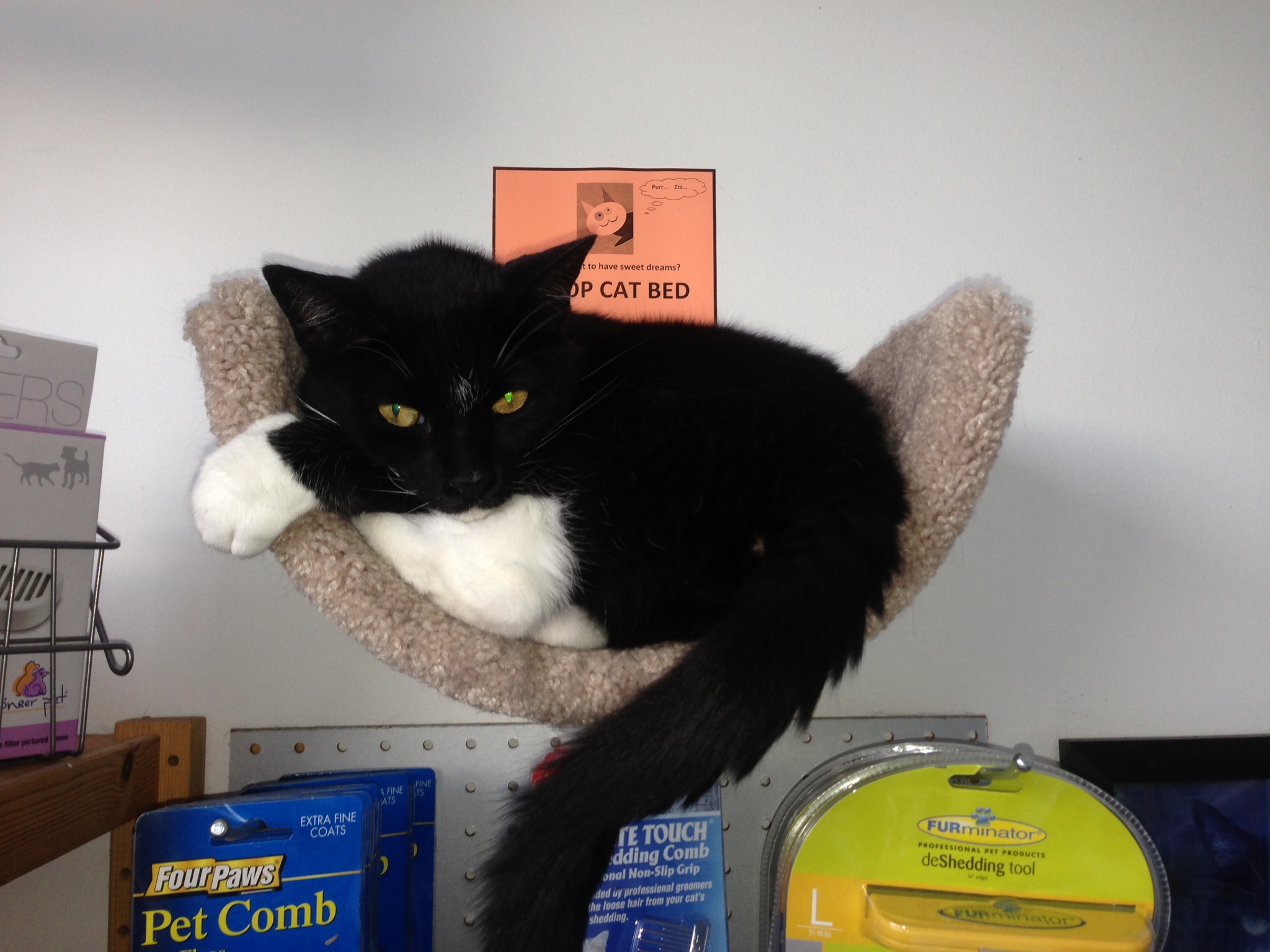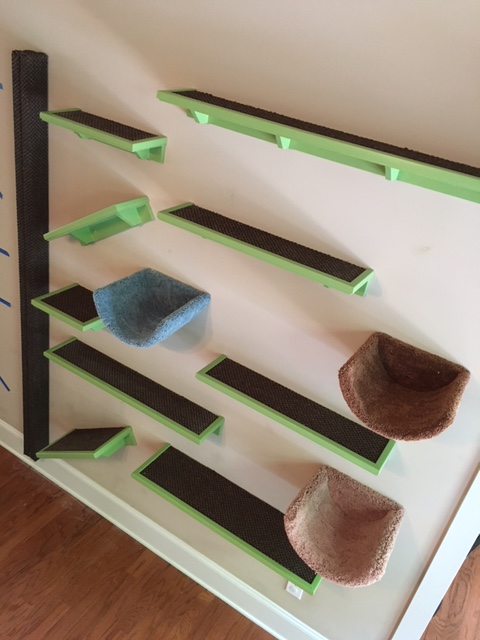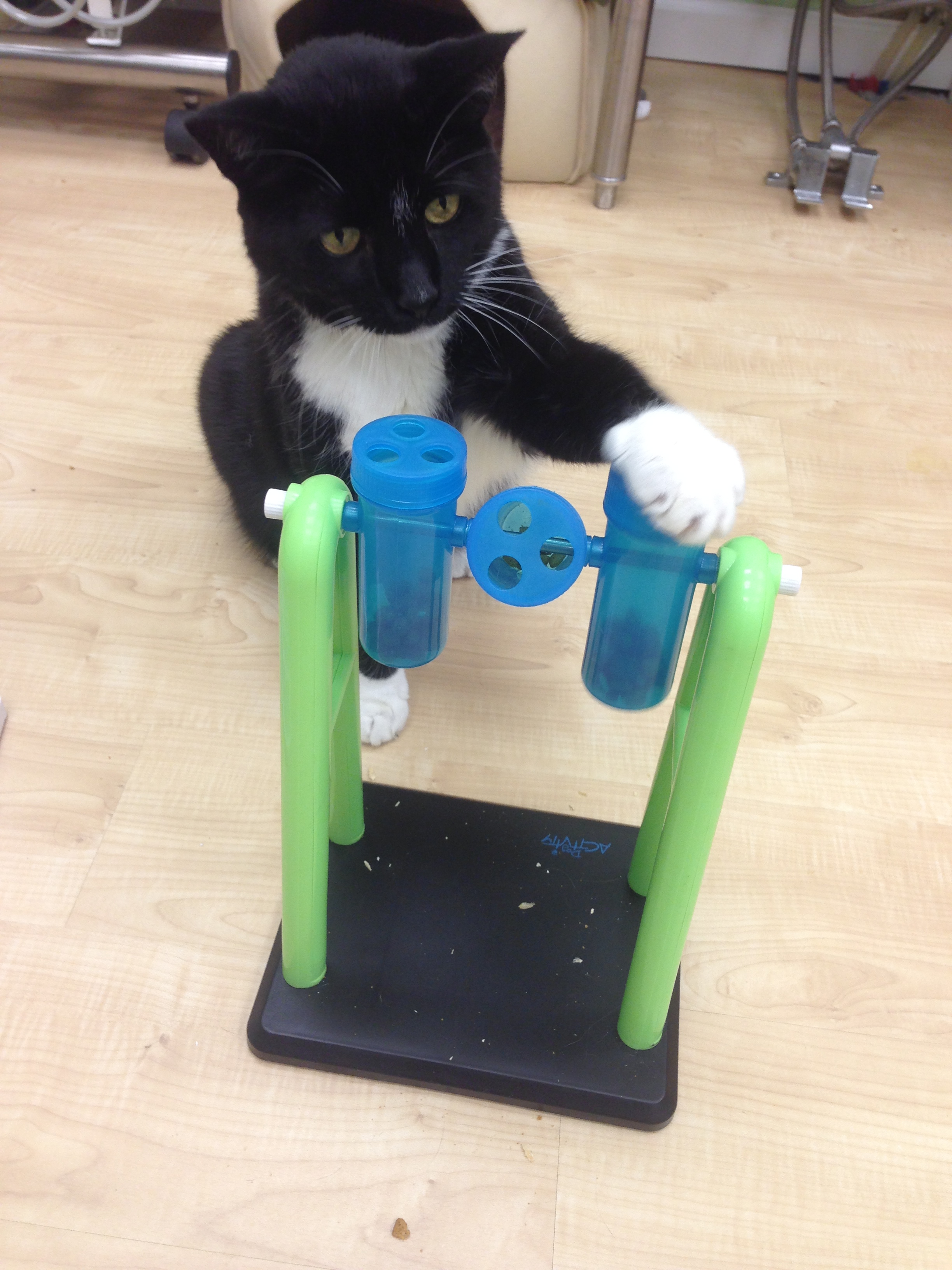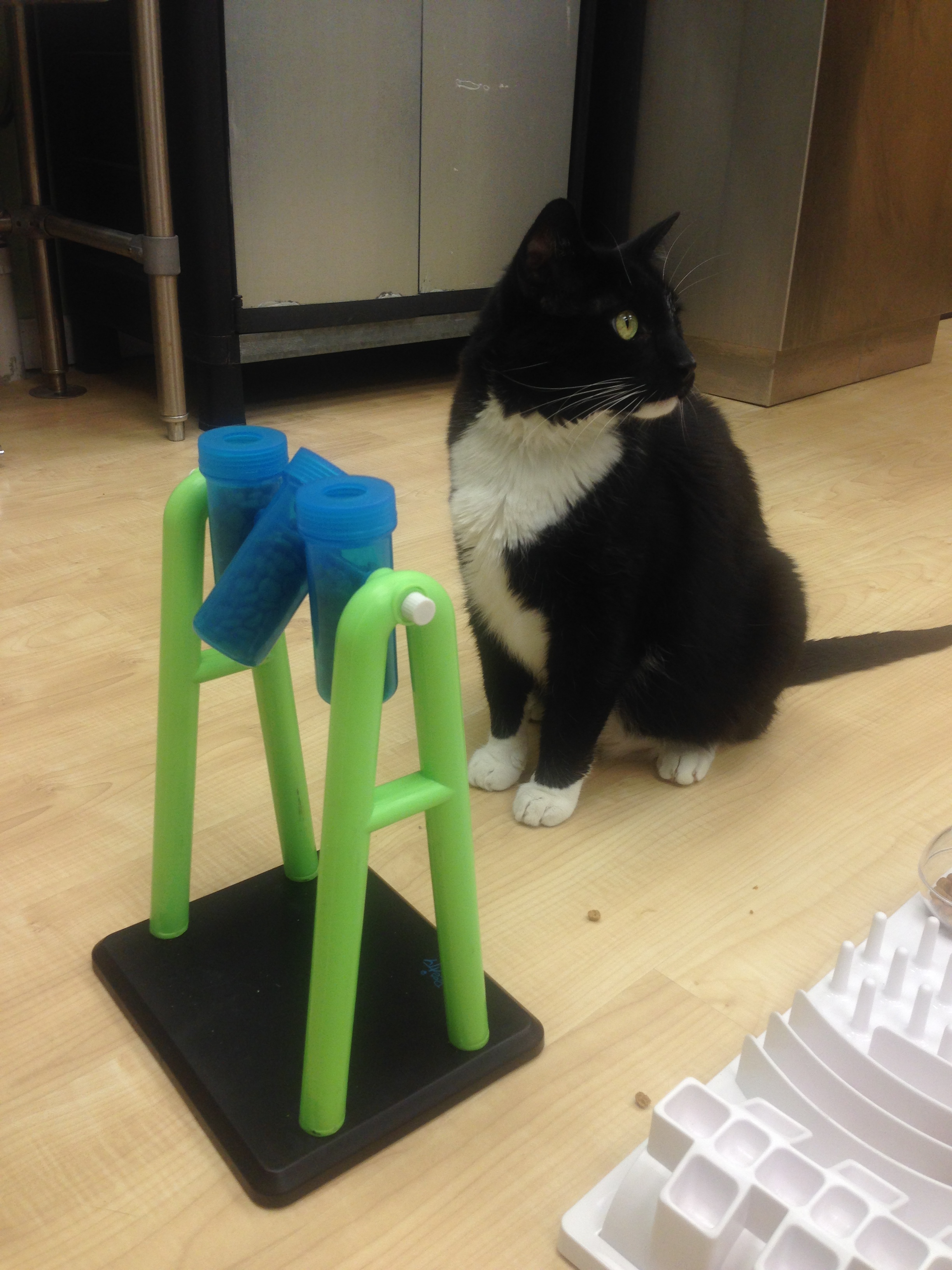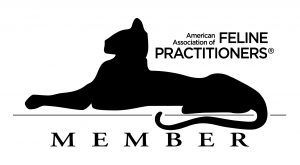
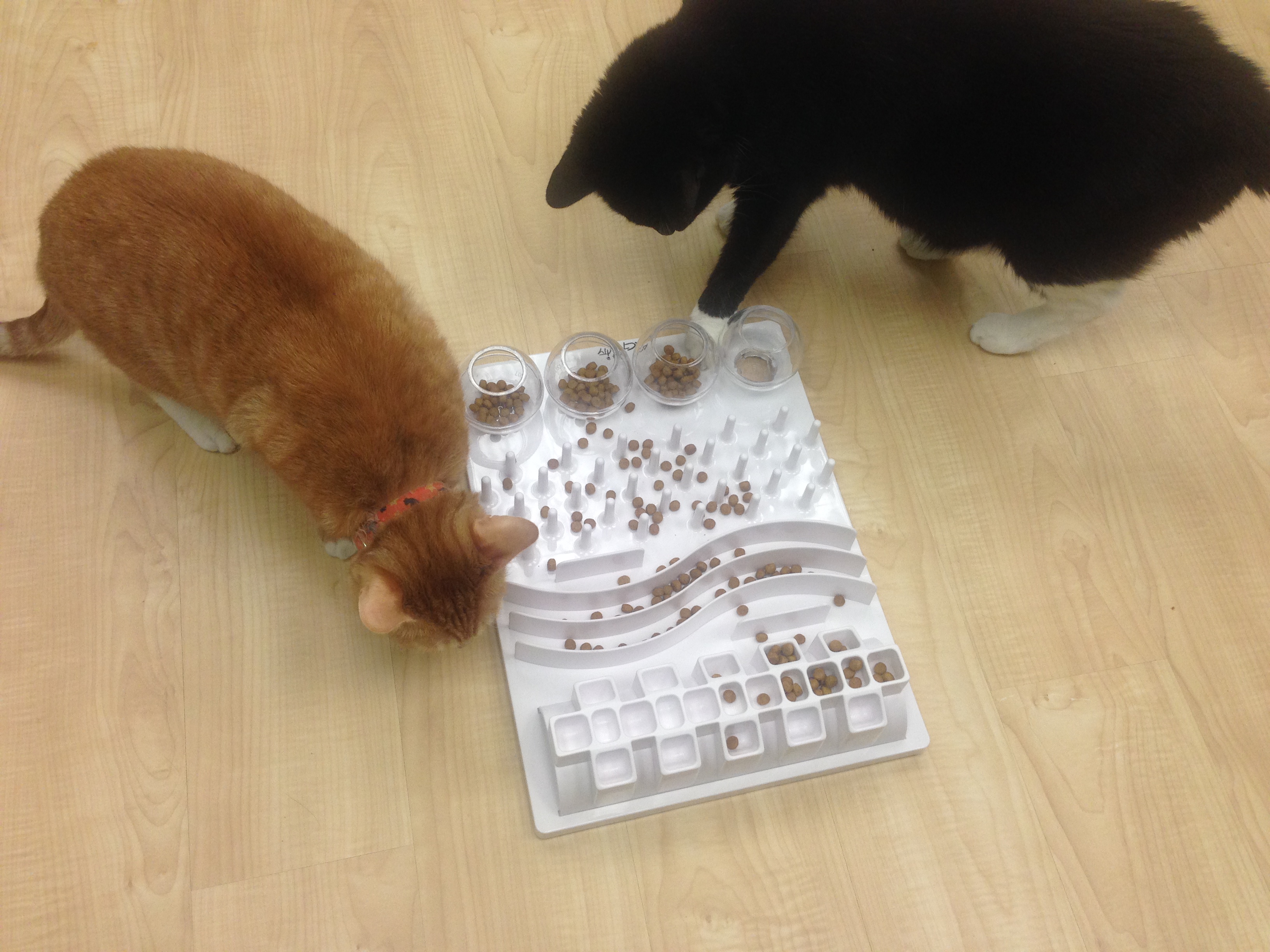
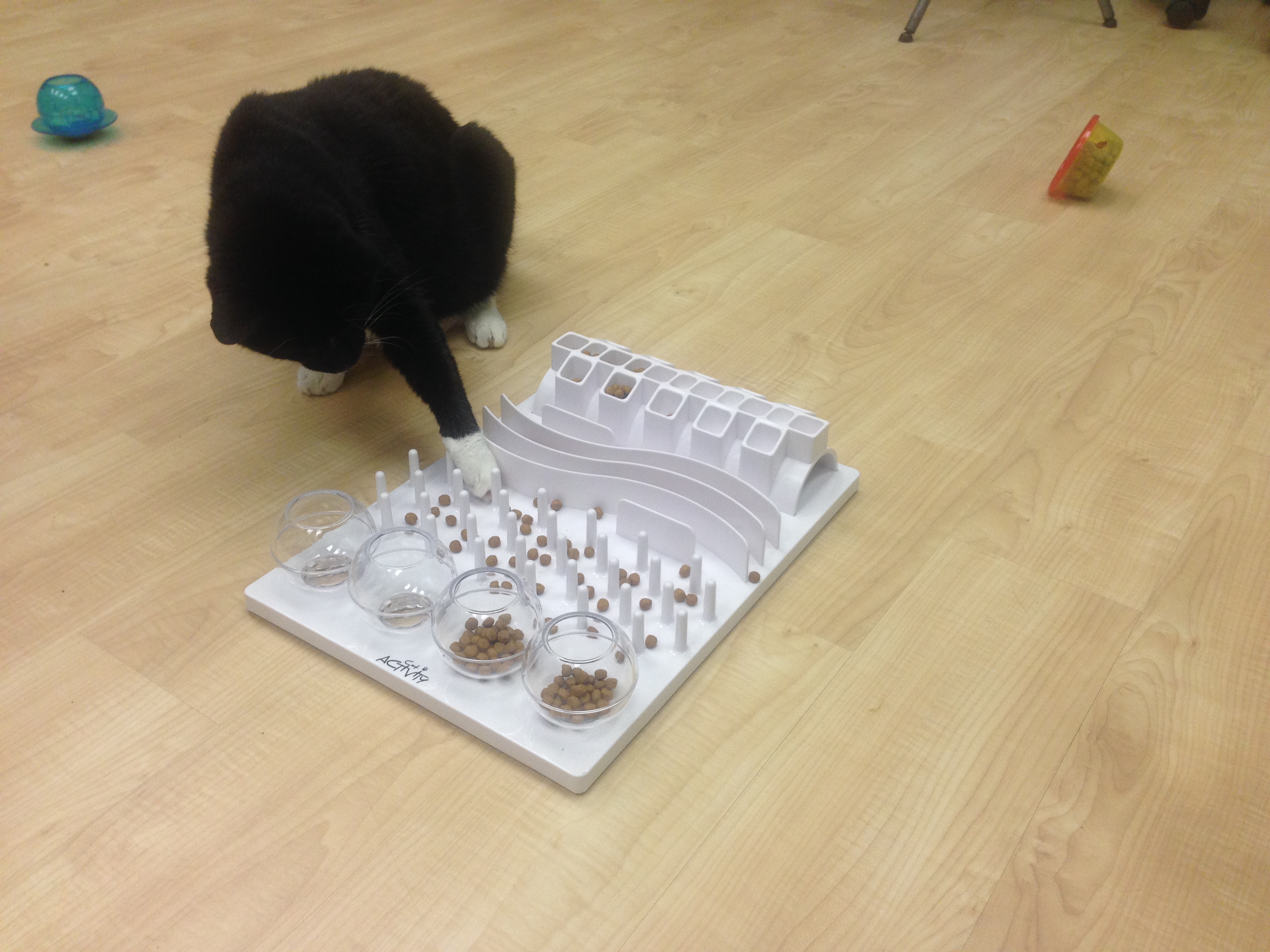
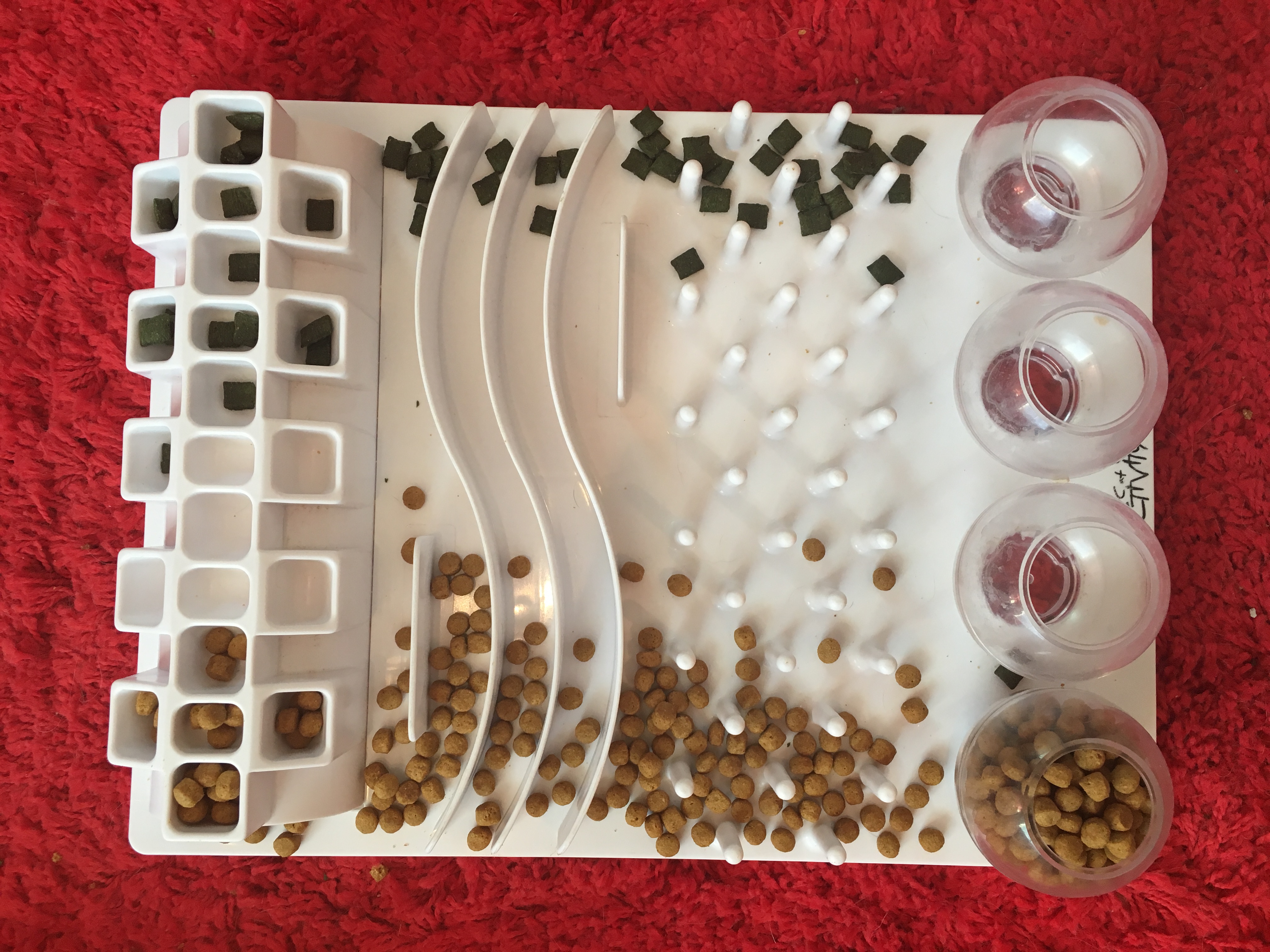
This toy is amazing, easy to clean and versatile. You can stuff it full of food for beginners or leave it lean for master foragers.
The "tongue module" (the ice cube tray-like portion) is specifically designed for canned food as well as for dry. This module works the feline jaw muscles similarly to how a cat would lick and work to remove flesh from the bones of their prey. The intelligent design takes "whisker stress" into consideration so that the cat's whiskers can freely move without obstruction. This also significantly slows down voracious over-eaters that later vomit undigested canned food.
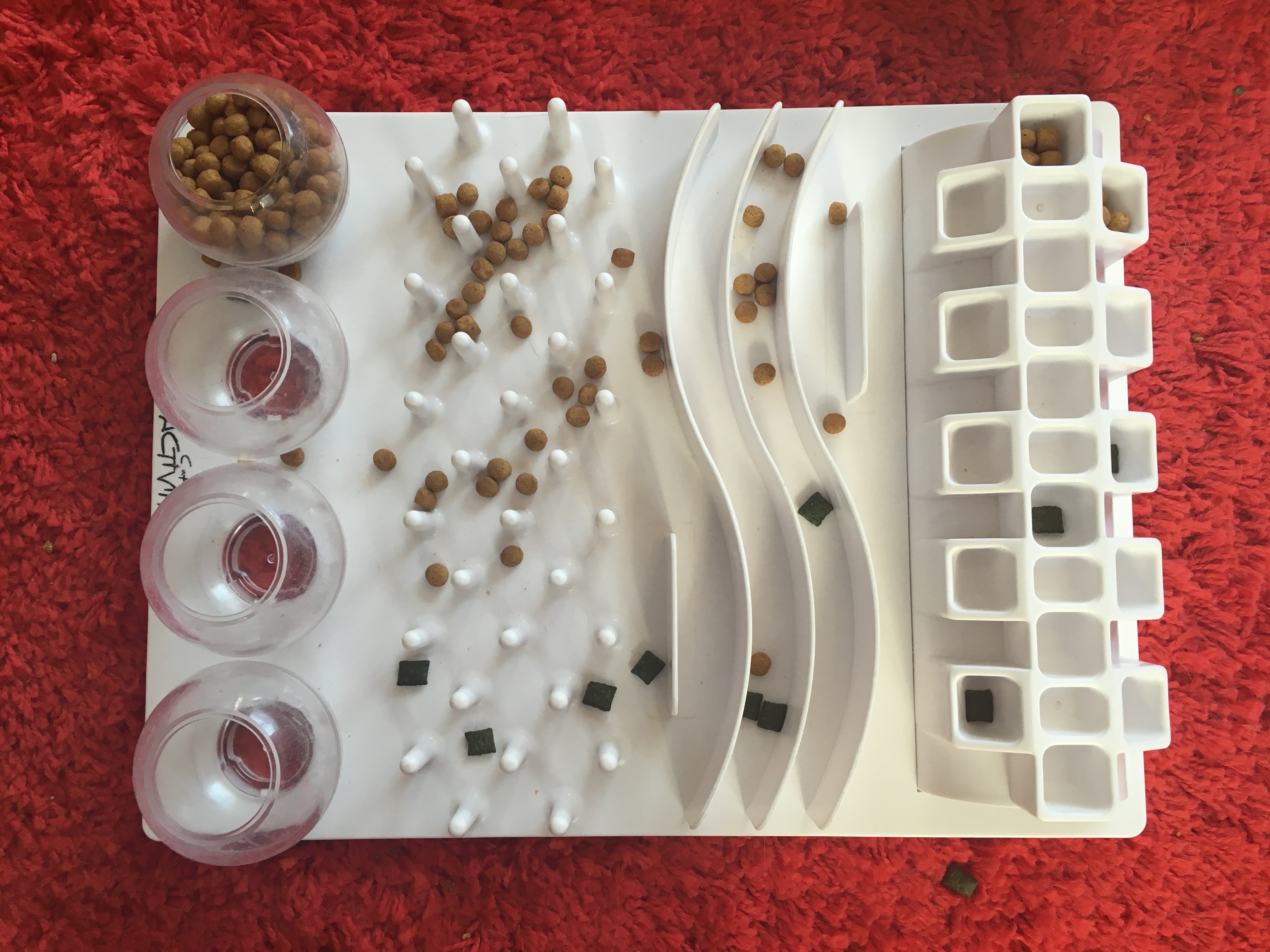
This post and all of its content is written by and property of Ingrid Johnson, CCBC Certified Cat Behavior Consultant of Fundamentally Feline, LLC.
